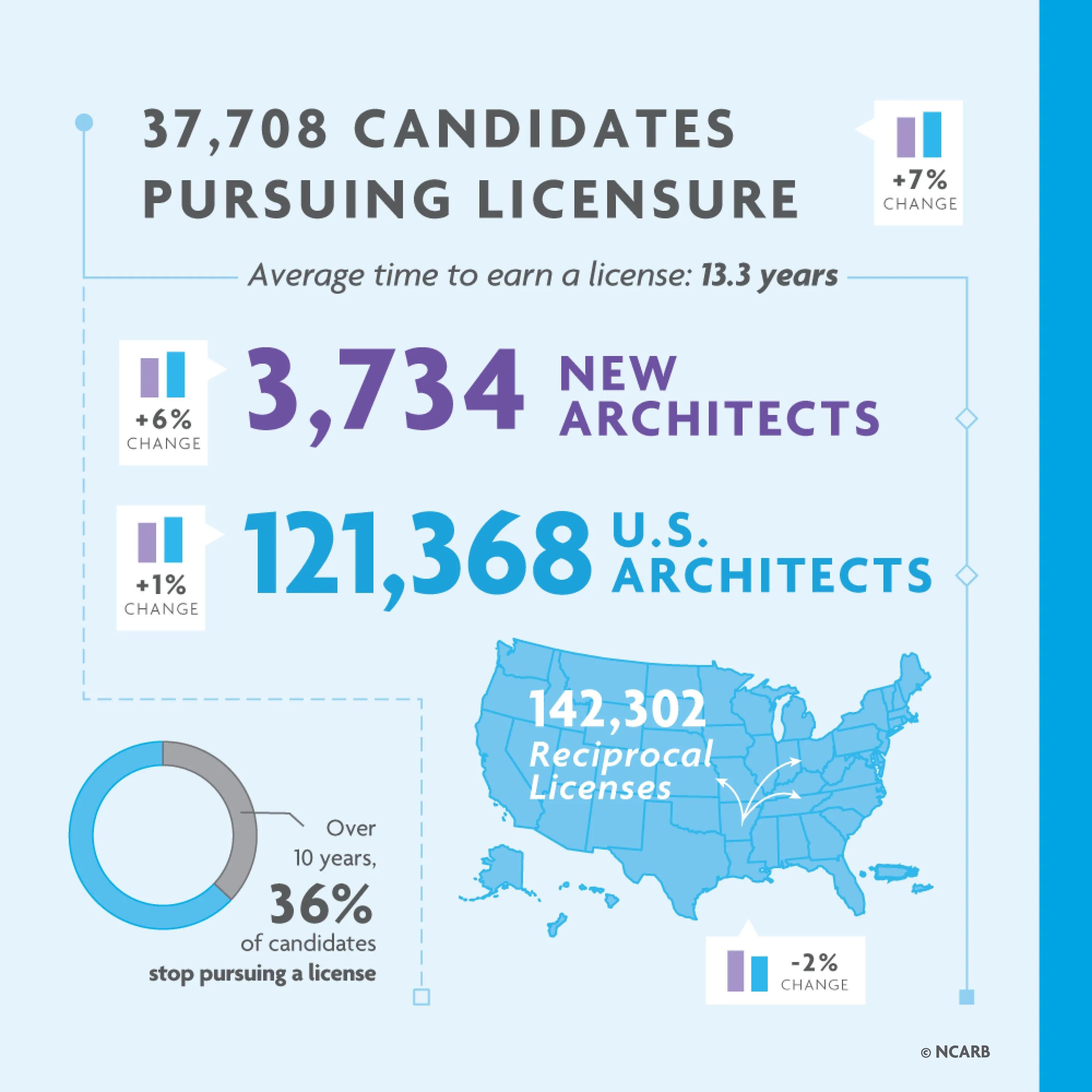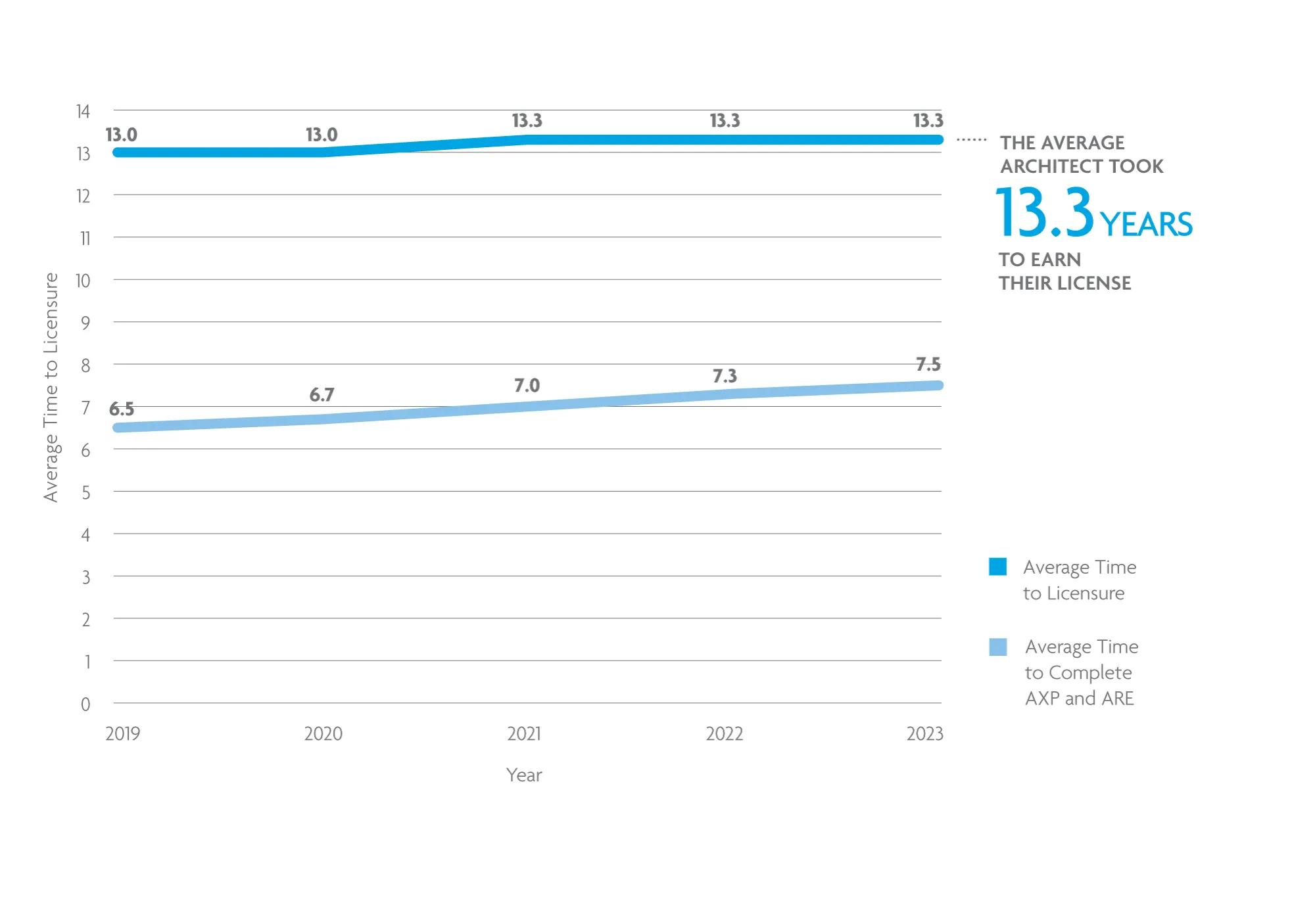The 2024 edition of NCARB’s annual data publication, NCARB by the Numbers, is now available! Focusing on data from the 2023 calendar year, this year’s publication provides an inside look at licensure trends for architecture—including the average time it takes to earn a license.
Overall, licensure progress was on the rise in 2023. The pipeline of individuals pursuing licensure and the population of new architects grew by 7% and 6%, respectively, in 2023.

More than 3,700 individuals became an architect in 2023, the highest number seen since 2019. This growth signals continued recovery from the COVID-19 pandemic, as well as the positive impact of several recent programmatic changes such as the retirement of the exam’s rolling clock and the launch of free practice exams.
But despite the growth in the number of new architects, NCARB isn’t seen a reduction in the time it takes to become an architect.
On average, it takes 13 years to become an architect—why?

The average time to licensure has held steady at 13.3 years for the past 3 years. Those 13 years include time spent earning a degree (typically 5-6 years), navigating the experience program (4.9 years on average), and passing the exam (2.5 years on average). While candidates can overlap these requirements, many candidates choose not to: nearly half (44%) of candidates in 2023 waited to test until after they completed the experience program. The time to licensure also includes time spent pausing between programs.
Over the past several years, NCARB has made several changes to remove unnecessary impediments to our programs—but the time to licensure hasn’t fallen. In part, this is due to the impact of the COVID-19 pandemic, which has particularly affected candidates navigating the experience program.
However, NCARB anticipates that time to licensure may fluctuate in the next several years due to competing influences. As the direct impact of the pandemic begins to fade, the time it takes to earn a license may decrease. However, recent programmatic changes like retiring the exam’s 5-year rolling clock for passed exam divisions may provide less incentive for candidates to complete the licensure process quickly, potentially extending the time to licensure.
As NCARB considers other potential programmatic changes for the future, we’re shifting our priority from time to licensure to flexibility of licensure—ensuring that all candidates have an accessible pathway to practice, regardless of background.
About NCARB by the Numbers
The findings in NCARB by the Numbers are pulled from NCARB’s database of nearly 125,000 licensure candidates and architects, making this annual report the most comprehensive source for licensure statistics.
Learn more about trends on the path to licensure in the 2024 edition of NCARB by the Numbers!



